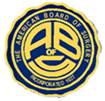Gynecomastia Surgery: What to Expect
Posted on Friday, March 29th, 2013 by Dr. Babak Dadvand
Gynecomastia surgery is becoming very commonplace. As a plastic surgeon specializing in gynecomastia surgery, I spend a considerable amount of time discussing the procedure and the recovery with my patients.
In a previous post I discussed the different surgical options for gynecomastia based on how the patient presents. The surgical technique needs to be tailored to that specific patient’s form of gynecomastia. In this post, I will describe what is involved with surgery and recovery.
Surgery is performed on an outpatient basis. The surgery takes between 1-2 ½ hours depending on what needs to be done. I prefer to use general anesthesia for procedures, though some may be performed under IV sedation or even local anesthesia. I use drains in about 10% of my cases. The use of drains is based on how much glandular tissue needs to be removed. Men with a large amount of firm glandular tissue will have a relatively large space under their skin once this tissue is removed. Drains in these cases are important to remove any fluid the body naturally secretes and will reduce the incidence of seroma formation. If you require drains, they will be removed when the drain output is less than 30cc/day.
At the end of the procedure, surgical tape is placed followed by gauze, foam, and a compression vest. The purpose of the foam is to distribute the pressure of the vest more evenly as well as reduce the amount of bruising. The compression vest is important to control swelling. Patients may shower on the second day after surgery but it is important not to get the foam wet. Most patients elect to sponge bathe their upper body for this reason.
The surgical tapes, gauze, and foam are removed at one week. The compression vest needs to be worn for 4-6 weeks, depending on the severity of the gynecomastia and the amount of swelling. The patient must refrain from exercise and other strenuous activities during that time as well in order to reduce the swelling quickly. One further point is to keep salt intake to a minimum during this time to keep swelling to a minimum.
Pain is easily controlled with pain medication and most men only require pain medicine for 3-5 days. Once you are off the pain medication, you may drive. You may return to work at that time as long as it does not require strenuous activity or lifting.
Patients follow up at the office at 1 week, 1 month, 3 months, 6 months, and 1 year. At the 1 month visit, it will be determined whether the garment can be discontinued or if it needs to be worn for another 2 weeks.
You will see a dramatic difference in your chest even at one week, and this will continue to improve over the next 2-4 months as the swelling reduces. Patients may take up to 6 months for final results; however most see dramatic improvements within the first 6-8 weeks.
To learn more about gynecomastia and to view before and after pictures visit my website at drdadvandplasticsurgery.com.
This entry was posted in Gynecomastia. Bookmark the permalink.





 4.9 stars - based on 106 reviews
4.9 stars - based on 106 reviews
 4.9 stars - based on 73 reviews
4.9 stars - based on 73 reviews
